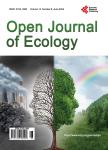Can the Iberian Floristic Diversity Withstand Near-Future Climate Change?
Can the Iberian Floristic Diversity Withstand Near-Future Climate Change?作者机构:Centre for Plant Diversity and Systematics School of Biological Sciences University of Reading Berkshire UK Unité de Recherche “Ecologie et Dynamique des Systèmes Anthropisés” (EDYSAN FRE3498 CNRS-UPJV) Jules Verne University of Picardie Amiens France Departamento de Biología Vegetal II F. Farmacia Universidad Complutense Madrid Spain
出 版 物:《Open Journal of Ecology》 (生态学期刊(英文))
年 卷 期:2014年第4卷第17期
页 面:1089-1101页
学科分类:1002[医学-临床医学] 100214[医学-肿瘤学] 10[医学]
主 题:Biodiversity Climate Change MAXENT Plants Portugal Spain Species Distribution Model
摘 要:We assess how effectively the current network of protected areas (PAs) across the Iberian Peninsula will conserve plant diversity under near-future (2020) climate change. We computed 3267 MAXENT environmental niche models (ENMs) at 1-km spatial resolution for known Iberian plant species under two climate scenarios (1950-2000 baseline & 2020). To predict near-future species distributions across the network of Iberian and Balearics PAs, we combined projections of species’ ENMs with simulations of propagule dispersal by using six scenarios of annual dispersal rates (no dispersal, 0.1 km, 0.5 km, 1 km, 2 km and unlimited). Mined PA grid cell values for each species were then analyzed. We forecast 3% overall floristic diversity richness loss by 2020. The habitat of regionally extant species will contract on average by 13.14%. Niche movement exceeds 1 km per annum for 30% of extant species. While the southerly range margin of northern plant species retracts northward at 8.9 km per decade, overall niche movement is more easterly and westerly than northerly. There is little expansion of the northern range margin of southern plant species even under unlimited dispersal. Regardless of propagule dispersal rate, altitudinal niche movement of +25 m per decade is strongest for northern species. Pyrenees flora is most vulnerable to near-future climate change with many northern plant species responding by shifting their range westerly and easterly rather than northerly. Northern humid habitats will be particularly vulnerable to near-future climate change. Andalusian National Parks will become important southern biodiversity refuges. With limited human intervention (particularly in the Pyrenees), we conclude that floristic diversity in Iberian PAs should withstand near-future climate change.



